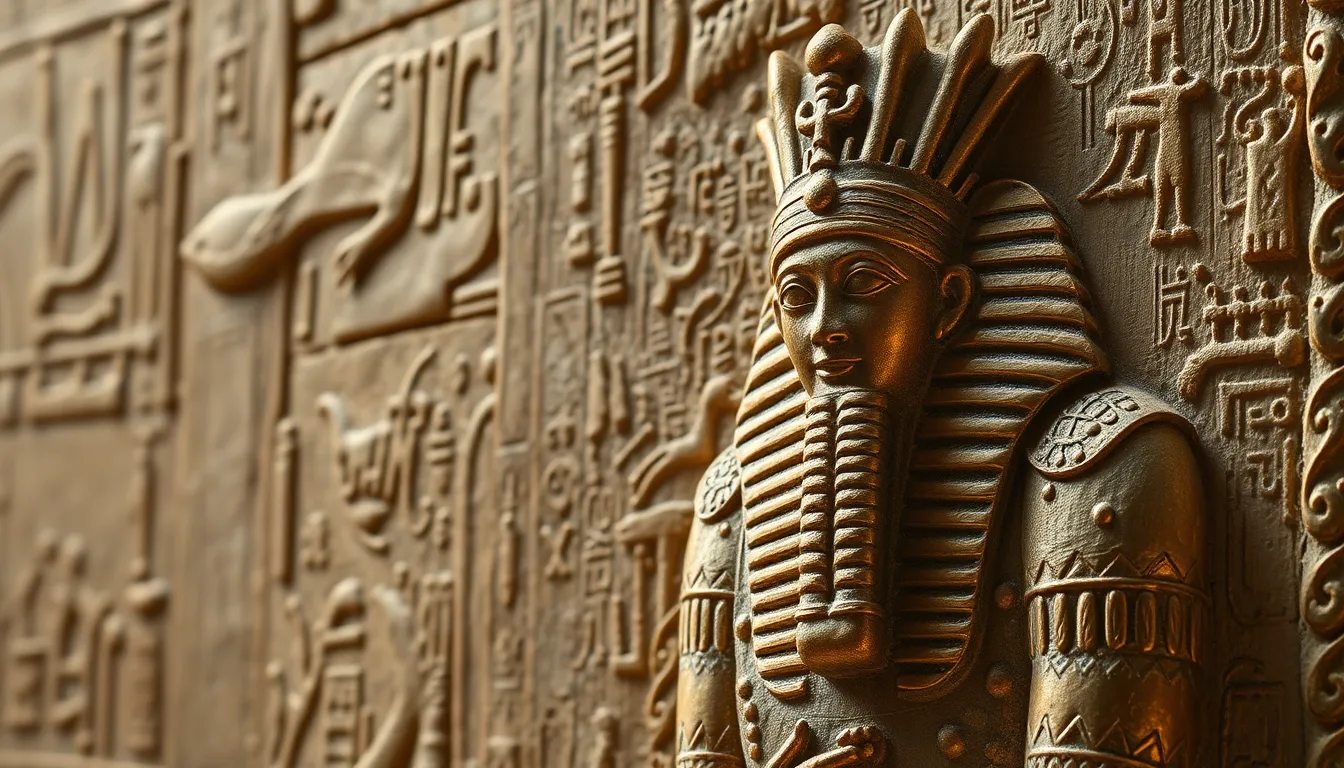The Role of the God Amun in Egyptian Funerary Texts
I. Introduction
Amun holds a prominent place in ancient Egyptian religion, revered as one of the most significant deities in the pantheon. His importance transcends mere worship; he embodies the essence of creation and kingship, essential themes in Egyptian thought. Understanding Amun’s role, particularly in the context of funerary texts, reveals much about the ancient Egyptians’ beliefs regarding the afterlife.
Funerary texts are pivotal in shedding light on these beliefs, serving as guides for the deceased on their journey through the afterlife. This article aims to explore Amun’s multifaceted role within these texts, illuminating his significance in the spiritual landscape of ancient Egypt.
II. Historical Context of Amun Worship
Amun’s emergence as a prominent deity can be traced back to the early dynastic period, evolving significantly over time. Initially a local god of Thebes, Amun’s stature grew, especially during the Middle Kingdom, when he became synonymous with power and fertility.
His association with Thebes allowed him to rise to prominence, becoming the principal god of the city and the patron of the pharaohs. As the Egyptian pantheon expanded, Amun was integrated with other deities, most notably Ra, forming the composite god Amun-Ra, symbolizing the sun and creation.
III. Funerary Texts: Definition and Types
Funerary texts in ancient Egypt are a collection of religious writings designed to assist the deceased in navigating the afterlife. These texts vary in form and purpose, reflecting the evolving beliefs and practices surrounding death and resurrection.
- Pyramid Texts: Among the oldest religious texts, inscribed in the pyramids of the Old Kingdom, they contain spells and rituals intended to ensure the pharaoh’s safe passage to the afterlife.
- Coffin Texts: Emerging during the Middle Kingdom, these texts were inscribed on coffins and were accessible to nobility, offering spells and guidance for the deceased.
- Book of the Dead: A compilation of spells and illustrations, this text served as a guide for the deceased, detailing the journey through the underworld and the judgment process.
These texts played a crucial role in burial practices, emphasizing the belief in an afterlife and the importance of proper rituals to ensure eternal existence.
IV. Amun’s Attributes and Symbolism
Amun is often depicted as a creator god and the king of the gods, embodying the principles of life, fertility, and divinity. His attributes include:
- Creator God: Amun’s role as a creator resonates through various myths, establishing him as a source of all life.
- King of the Gods: As a ruler, Amun is associated with authority and governance, reflecting the divine right of the pharaohs.
In funerary imagery, Amun is symbolically represented through various forms, such as the ram, signifying strength and stability. His attributes relate closely to the afterlife journey, where he is viewed as a guiding force for the deceased.
V. Amun’s Role in the Afterlife
Amun’s involvement in the afterlife is multifaceted, encompassing both judgment and protection. He plays a crucial role in the weighing of the heart ceremony, where the deceased’s heart is balanced against the feather of Ma’at, the goddess of truth and justice.
- Judgment of the Deceased: Amun, alongside Osiris, presides over the judgment, determining the fate of the soul.
- Protective Role for the Soul (Ka): Amun is seen as a guardian who ensures the safe passage of the Ka, the vital essence of the deceased.
The presence of Amun in afterlife narratives emphasizes his protective qualities and his significance in ensuring a successful transition to the afterlife.
VI. Case Studies of Amun in Specific Funerary Texts
Examining specific funerary texts reveals the depth of Amun’s influence. In the:
- Pyramid Texts: Amun is frequently invoked in spells, asserting his power and role in the afterlife journey of the pharaohs.
- Coffin Texts: Various spells reference Amun’s protective nature, invoking his name for guidance and strength during the afterlife journey.
- Book of the Dead: Amun’s role is highlighted in several chapters, illustrating his importance in the deceased’s journey and judgment.
These case studies illustrate the consistency of Amun’s presence and the reverence afforded to him in the context of funerary practices.
VII. Amun’s Legacy and Influence on Later Religious Texts
Amun’s significance in funerary texts extended beyond ancient Egypt, influencing later religious beliefs and interpretations. His role in funerary practices laid a foundation for the understanding of the afterlife in subsequent Egyptian beliefs.
- Influence on Later Egyptian Beliefs: Amun’s characteristics and narratives shaped the development of later religious texts, reinforcing the themes of judgment and resurrection.
- Representation in Greek and Roman Adaptations: Amun’s image was adapted by Greek and Roman writers, who integrated him into their own mythologies, often merging him with gods like Zeus.
- Modern Interpretations: Amun’s enduring legacy continues to inform contemporary understandings of ancient Egyptian religion and spirituality.
VIII. Conclusion
Amun’s multifaceted role in Egyptian funerary texts underscores his significance in ancient beliefs about the afterlife. From his protective nature to his involvement in the judgment of the deceased, Amun embodies the complexities of ancient Egyptian spirituality.
Understanding Amun’s role enhances our appreciation for the rich tapestry of beliefs that characterized ancient Egypt, emphasizing the importance of funerary practices in ensuring a successful transition to the afterlife. Further research into Amun and his influence on Egyptian funerary practices promises to reveal even more about this fascinating aspect of ancient religion.




